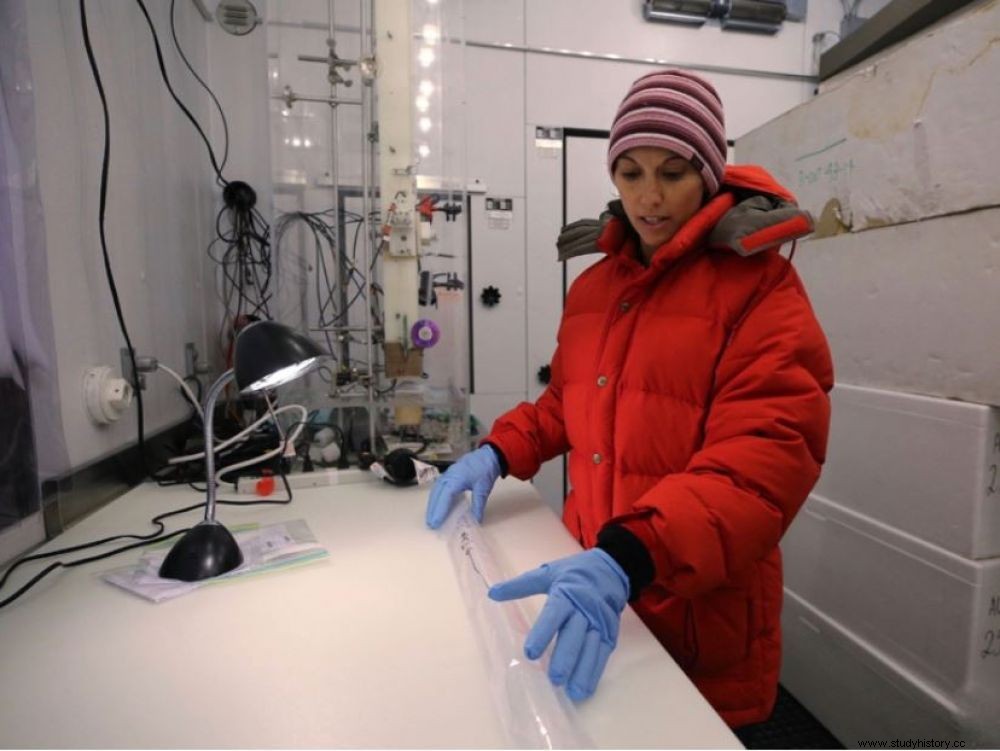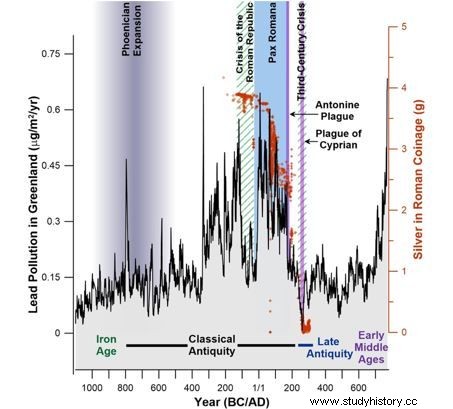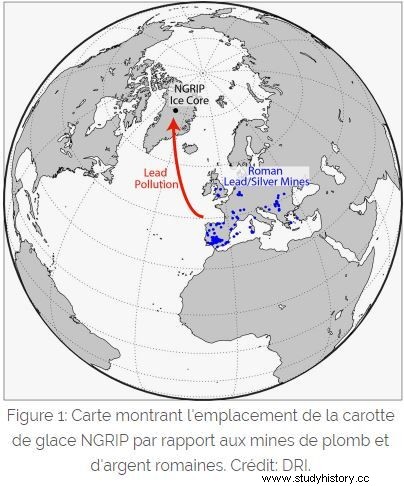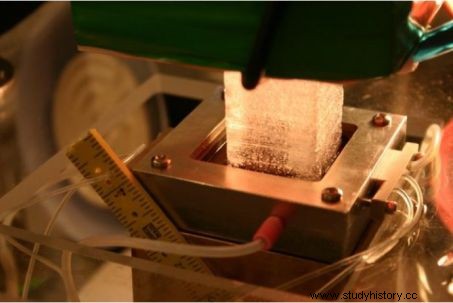The lead pollution of the Roman Empire was revealed by the ice sheets of Greenland.

Analysis of an ice core sample taken in Greenland, in the laboratory of the Desert Research Institute (DRI), in Reno (Nevada).
Like plastic in the oceans in the 21st century century, the lead pollution generated by Roman civilization also ended up in the Arctic ice! And the quantities of lead that have been trapped there have just allowed an extraordinarily detailed reading. Published in Proceedings of the National Academy of Sciences (PNAS), these results were obtained by modeling measurements of old lead emissions found in ice cores.
Analysis of an ice core from deep core drilling. © Desert Research Institute (DRI).
The whole project being led by Andrew I. Wilson of the University of Oxford (UK). This archaeologist, a specialist in the Roman economy, came into contact with Joseph R. McConnell, an expert in the analysis of deep ice samples at the Desert Research Institute in Reno, Nevada (United States), to study ice boreholes extracted by the NGRIP (North Greenland Ice Core Project ) in Greenland. In particular sections corresponding to the period from 1100 BC to 800 AD, thus including Roman Antiquity. The amounts of lead retained in the water from these cores were then measured by mass spectrometers. "Lead emissions increased during the expansion of Roman and Carthaginian mines, mainly in the Iberian Peninsula, reaching their maximum under the Empire" , write the authors of the study.
"The data collected amazingly reflects the historical timeline , confirms Yann Le Bohec, historian specializing in Rome, professor emeritus at the University of Paris-Sorbonne, joined by Sciences et Avenir. Lead emissions indeed increase significantly in times of peace and prosperity, such as Rome experienced between 27 BC and 180 AD. J.C then decrease in periods of crisis". So it is from 235 to 284 of our era, when the empire begins to waver with the barbarian invasions, or in 476 at the time of the fall of the Roman Empire of the West. Strong regressions could also be correlated to the two great epidemics which struck the Empire in the II e and III e centuries:the plague of Antoninus, from 165, and that of Cyprian, between 251 and 260.
 Ancient European lead emissions between 1100 BC and 800 AD captured in Greenland ice and their association with major historical events. © Desert Research Institute (DRI).
Ancient European lead emissions between 1100 BC and 800 AD captured in Greenland ice and their association with major historical events. © Desert Research Institute (DRI).
"Lead was widely used by the Romans, both for the manufacture of water pipes, pipes and for that of currency, explains the historian.Especially during phases of inflation, when silver was replaced by lead, and fair currencies were "sauced" in a thin film of silver ". Since native silver deposits are not very common, it is that found in argentiferous lead ores that was mainly mined. And it is the process of lead-silver separation, as well as its fusion in furnaces at high temperature (1200°C) as practiced by the Romans, which was a major source of lead emissions into the atmosphere.

Driven by the winds, falling as snow above Greenland, these particles remained trapped in the ice. "I wouldn't go so far as to say that the lead pollution graph reflects the exact GDP (Gross Domestic Product) of Rome, but it's probably the best overall indicator of its economic health we've had so far! ", enthused Andrew I. Wilson in a statement to the New York Times . The researcher is now trying to locate the sources of this pollution more precisely. Especially in the Iberian Peninsula, like the Rio Tinto mines in Spain, after the Roman conquests of Cantabria and Asturia.

